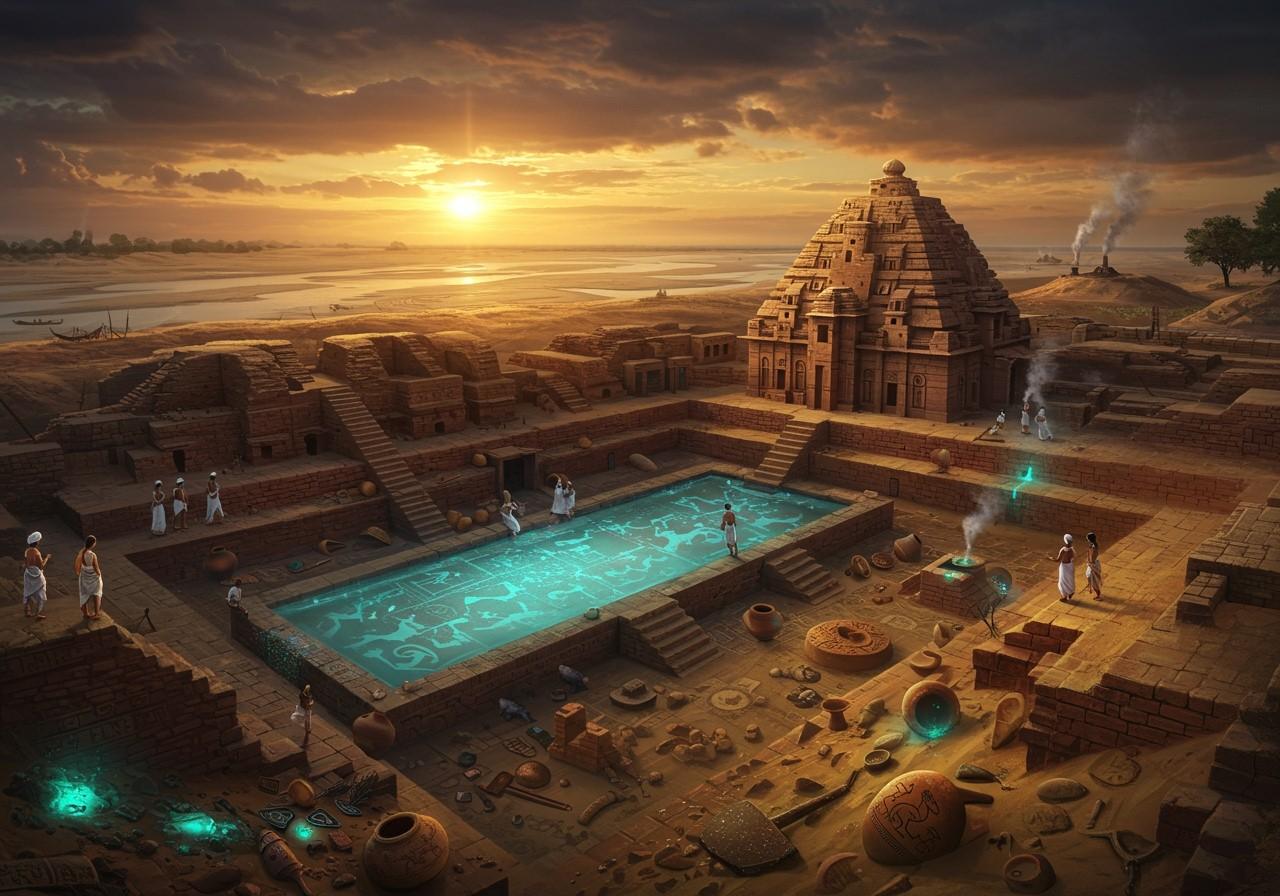
Mohenjo-daro, a major center of the ancient Indus Valley Civilization, flourished around 2500 BCE in present-day Pakistan. This sophisticated city, home to an estimated 35,000 people, boasted advanced urban planning and civil engineering. Yet, its sudden decline around 1900 BCE remains a source of fascination and debate among historians and archaeologists. This article delves into the theories surrounding Mohenjo-daro’s demise, exploring the evidence and offering insights into this ancient enigma.
A Glimpse into Mohenjo-daro’s Grandeur
Mohenjo-daro showcased remarkable urban development for its time. Its meticulously planned layout included:
- The Great Bath: A large, precisely constructed public bathing pool, possibly used for ritual cleansing or communal gatherings. Its sophisticated design and waterproofing techniques highlight the city’s engineering prowess.
- Granaries: Massive storage structures for grain, demonstrating the city’s organized approach to food security and resource management. These granaries suggest a well-established agricultural system and a significant population.
- Residential Blocks: Well-organized living spaces, indicating a structured social system and a high degree of urban planning. The standardized brick sizes and street layouts suggest a centralized authority and a sophisticated understanding of urban design.
- Advanced Drainage System: A network of covered drains and sewers, showcasing the city’s focus on sanitation and public health. This intricate system highlights the importance of hygiene and urban infrastructure in Mohenjo-daro’s society.
Mohenjo-daro’s economic and social structures were highly developed, with trade networks extending as far as Mesopotamia. Archaeological discoveries, including seals, pottery, and tools, provide glimpses into the daily lives and rich culture of its inhabitants.
Theories Behind Mohenjo-daro’s Decline
Several theories attempt to explain the city’s decline:
Aryan Invasion Theory
This theory suggests that nomadic Aryan tribes invaded and destroyed Mohenjo-daro. Popularized by Sir Mortimer Wheeler in the mid-20th century, this theory linked the city’s decline to potential destruction by external forces, even referencing the deity Indra. However, evidence of widespread violence or destruction associated with a large-scale invasion remains elusive.
Climate Change Theory
This theory posits that alterations in monsoon patterns led to prolonged droughts, crippling agriculture and leading to the city’s abandonment. Changes in rainfall could have disrupted the Indus River system, impacting both water supply and agricultural productivity.
Geological and Environmental Factors
This theory focuses on natural events, such as tectonic activity, earthquakes, river course changes, and flooding. Geological studies have indeed revealed evidence of flood deposits within the city’s ruins. The shifting course of the Indus River might have significantly impacted Mohenjo-daro’s infrastructure and agricultural lands.
A Multifaceted Decline?
Rather than a single catastrophic event, Mohenjo-daro’s decline was likely a gradual process influenced by multiple factors. Archaeological strata reveal changes in habitation patterns, suggesting social upheaval and internal strife. Declining construction quality points to economic hardship, while a decrease in imported goods and a deterioration in craftsmanship further support this notion. Skeletal remains bearing evidence of disease outbreaks suggest that health and sanitation issues may have also contributed to the city’s downfall.
Contributing Factors to Mohenjo-daro’s Fall
- Environmental Degradation: Increasing soil salinity, deforestation, and overuse of natural resources could have negatively impacted agricultural productivity, leading to food shortages and economic decline.
- Political Instability: Internal power struggles or the weakening of central authority might have disrupted social order and governance, contributing to the city’s decline.
- External Pressures: While evidence of a large-scale invasion remains inconclusive, smaller-scale raids or migrations could have disrupted trade routes and created instability.
- Cultural Shifts: Changes in social structures, religious beliefs, or economic activities might have led to a gradual shift away from urban life, contributing to the city’s depopulation.
Poojn.in: Connecting to the Sacred Heritage of India
As we contemplate the decline of ancient civilizations like Mohenjo-daro, it’s important to remember the importance of preserving our own cultural heritage. Poojn.in, India’s leading online store for cultural and religious goods, offers a wide selection of authentic puja items, handcrafted with the same reverence and attention to detail that characterized the sacred objects of ancient civilizations. Explore our collection of Lord Shiva murtis, camphor, and other essential puja samagri to enrich your spiritual practices.
Conclusion: Lessons from the Past
Mohenjo-daro’s story serves as a potent reminder of the complexities of ancient civilizations and the myriad factors that can contribute to their rise and fall. Its advanced urban planning, thriving society, and eventual decline offer valuable insights into urban sustainability, resource management, and the delicate balance between human societies and their environment. By studying the past, we gain a deeper appreciation for our own present and can work towards building a more sustainable and resilient future. Explore more about ancient Indian history and culture on Poojn.in’s blog.


